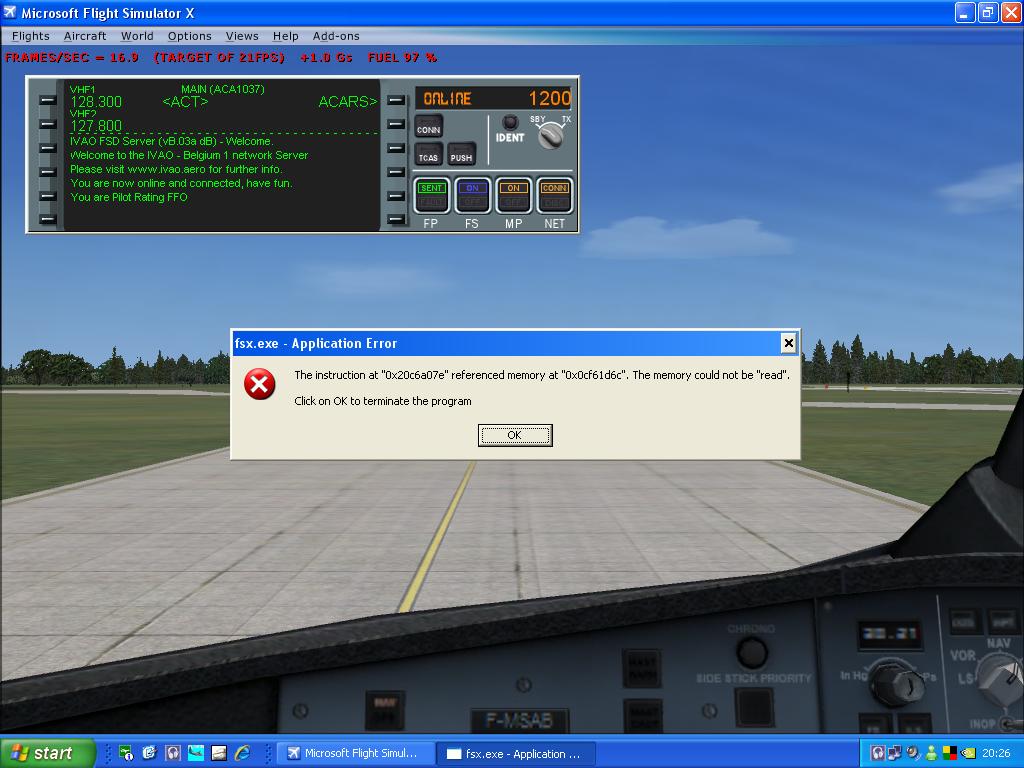

The LUA companion file for this tutorial is Tutorial_001_a.lua. ino file is an Arduino sketch to teach the very basics of interfacingĪrduino built hardware with FSX/P3D using LUA thru the Registered version of FSUIPC.
Fsuipc forum serial#
When you press the pin 8 button “A01” should print on the Serial Monitor. When you press the pin 7 button “A02” should print on the Serial Monitor.
Fsuipc forum software#
To test it, In the Arduino IDE Software go to “Tools” and open Serial Monitor. (Remember the COM Port, it comes up later) On the Arduino, hook up one switch to pin 7 and ground and the other switch to pin 8 and ground.Īfter plugging your Arduino into your PC, in the Arduino IDE software under “Tools”,īe sure to select your specific Arduino Board and correct COM Port. The LUA files should auto select LUA as language. ino files in Notepad++, go to the Language Menu and select C++ as the Language to get proper format colors. Notepad++ is also very useful for writing Arduino and LUA code.
Fsuipc forum install#
I would highly recommend that you download and install Notepad++ for viewing the code and instructional remarks. You can also copy the code directly from this page. NOTE: Both files include extensive instructions in remarks, some of which duplicate what is said here. * Two files (LUA_Arduino_Tutorial_001_a.ino) and (Tutorial_001_a.lua) located in this zip * The appropriate registered version for your sim of Pete Dowson’s FSUIPC * MicroSoft FSX or Lockheed Martin Prepar3d (P3D) (Any make should do, UNO, Mega, Leonardo or any of their clones.) It sends data from Arduino to the LUA script in order to change the COM1 radio Standby frequency up or down. This tutorial only covers one main thing, one way communication. LINDA can be very confusing at first, but hopefully I can cover that in another tutorial. LINDA has a number of functions in it but we are primarily interested in the LINDA Tracer function with the LINDA Console. There is another program that is nearly required for finding Control Codes in the simulator and Variables in aircraft in order to manipulate them. These PDFs are, but not limited to: FSUIPC Lua Library, FSUIPC4 Offset Status, The 2016 List of FSX and P3D Controls, Offset Mapping for PMDG 737NGX and Offset Mapping for PMDG 777X.
Fsuipc forum pdf#
You will need the Registered version of FSUIPC.įSUIPC comes with some PDF documents that can be very beneficial if not required viewing to program your LUA script. Hence, this tutorial only covers push buttons, no encoders or displays yet. I have reconsidered and decided to cater this tutorial to the novice as well. I was going to assume that the reader of this has a working Arduino device like a Radio using Link2FS. This is something that I hope to help rectify. Another downside is there are very few examples of LUA coding for FSUIPC available on the internet, let alone detailed instruction on how the code works. However, if you are a Flight Sim Geek you should probably already have the registered version of FSUIPC. Some downsides to LUA are the learning curve and the requirement to have the registered version of FSUIPC. LUA can do everything that Link2FS can do and more. LUA is a scripting language that FSUIPC can use to access and change information in FSX and P3D. Jim has stopped public work on Link2FS so no updates are available for future simulator updates like P3D V4. It allows people to build hardware based on Arduino micro controllers to interface with FSX or P3D flight simulators. Link2FS is a program put out by a guy named Jim who lives in New Zealand.

This is a guide for Flight Simulator cockpit builders that use Link2FS and Arduino to interface hardware with their simulator to make the migration from Link2FS to using a LUA Script through FSUIPC to do the same thing as Link2FS.


 0 kommentar(er)
0 kommentar(er)
